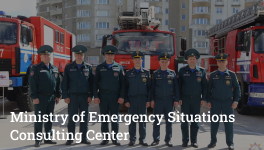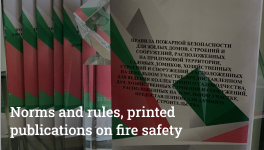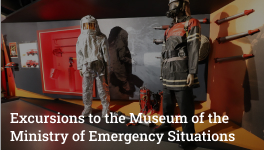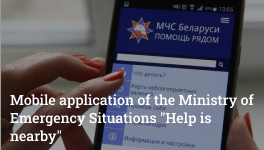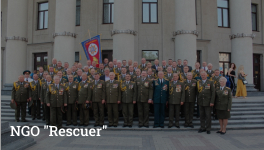IAEA press release on the results of the IRRS follow-up mission to the Republic of Belarus
An International Atomic Energy Agency (IAEA) mission found that Belarus has significantly strengthened its regulatory nuclear safety framework over the past five years, highlighting progress in the regulation of emergency preparedness and response. The team of experts also identified areas where challenges remain, including the need to further adapt regulatory inspections and inspector training for the new operational phase of the Belarussian nuclear power plant (NPP).
The Integrated Regulatory Review Service (IRRS) team today concluded a nine-day follow-up mission to review progress in Belarus’ implementation of recommendations and suggestions made during an initial mission in 2016. The mission was conducted at the request of the Government of Belarus. It was hosted by the Department of Nuclear and Radiation Safety (Gosatomnadzor) of the Ministry for Emergency Situations of the Republic of Belarus, the country’s regulatory body.
Belarus built its first NPP at Ostrovets, 130 km north-west of the capital Minsk, with two 1100 megawatts electric (MW(e)) pressurised water reactors of the Russian VVER technology. The first unit was connected to the grid in November 2020, and Belarus expects the second unit to be connected to the grid in 2022. Belarus also uses radiation sources in industrial and medical facilities.
The mission reviewed the regulatory framework for nuclear and radiation facilities and activities, with the exception of transportation. The team found that Belarus has successfully implemented many recommended actions from the 2016 mission.
“Belarus has made considerable improvements in its regulatory framework for safety since the 2016 mission and shows a strong commitment to nuclear and radiation safety,” said Anna Hajduk Bradford, Director of the IAEA Nuclear Installation Safety Division. “It is important that the Government continues this momentum and completes the remaining recommendations in a timely manner to ensure that effective regulatory oversight is sustainable.”
IRRS missions are designed to strengthen the effectiveness of the national nuclear and radiation safety regulatory infrastructure, based on IAEA safety standards and international good practices, while recognizing the responsibility of each country to ensure nuclear and radiation safety.
The team said Belarus has made progress in developing and implementing the regulatory framework for emergency preparedness and response as a result of the IRRS mission recommendations in 2016, including the establishment of the emergency response centre in 2017 and the holding of complex emergency exercises.
The IRRS team comprised eight senior regulatory experts from Canada, Finland, Greece, Pakistan, Romania, the Russian Federation, Switzerland, and the United States, and four IAEA staff members. The team conducted a series of interviews and discussions with the staff of Gosatomnadzor, the Ministry of Health and the Ministry of Natural Resources and Environmental Protection.
As part of the review, the team visited the Ostrovets NPP to observe a regulatory inspection carried out by Gosatomnadzor at the site. During the visit, team members held discussions with the operator. In the team’s report, they said Gosatomnadzor had implemented a thorough training and qualification programme for its NPP regulatory inspectors. Gosatomnadzor’s inspectors have developed their skills and expertise as a result of their long-term assignment at the NPP from the earliest stages of construction and through maintaining bilateral relationships with other VVER regulators to better understand the NPP’s construction and commissioning.
“The IRRS follow-up review team received full cooperation of all parties in an open and transparent manner throughout the mission,” said Georg Schwarz, the mission Team Leader and Deputy Director General of the Swiss Federal Nuclear Safety Inspectorate. “Belarus has addressed most of the recommendations and suggestions made by the 2016 IRRS Mission, which is a significant achievement in a period of five years.”
The review team noted the following actions taken by Belarus to implement the recommendations of the 2016 mission, in addition to those related to emergency preparedness and response:
- Gosatomnadzor developed a national policy and strategy for safety.
- The Government enhanced or developed nuclear and radiation safety regulations to better meet IAEA safety standards, including the law On Radiation Safety which entered into force in June 2020.
- The radiation safety law clarified the roles and responsibilities of the Ministry of Emergency Situations and the Ministry of Health for authorization, inspections and for emergency preparedness and response.
- Gosatomnadzor established the Center for Nuclear and Radiation Safety as a Technical Support Organization for regulatory functions.
The IRRS team also identified areas where continued efforts are needed and emphasized that Belarus should:
- Expand training programmes for Gosatomnadzor staff to prepare for any possible emerging technical challenges in the operation of the NPP.
- Develop performance indicators for regulatory inspections in the operational phase of the NPP.
- Further align the regulatory framework with the IAEA safety standards to include a requirement for the use of medical physicists in medical exposures control arrangements.
As part of the mission a meeting was held with Deputy Prime Minister Yury Nazarov, and the heads of the Ministry for Emergency Situations, the Ministry of Energy and the Ministry of Health.
“In Belarus, nuclear and radiation safety is an absolute priority,” said Vadim Sinyavsky, Minister for Emergency Situations in Belarus. “We requested the 2016 IRRS mission and this current follow-up mission to benefit from the external expert opinion on our national arrangements for nuclear safety. We strive to maintain a high level of nuclear safety in line with IAEA safety standards. We are grateful to the experts for their report and we will carefully follow the findings, as we do for all international assessment missions and peer reviews.”
The final mission report will be provided to the Government in about three months. The IAEA encourages its Member States to make such reports public.
IAEA Safety Standards
The IAEA Safety Standards provide a robust framework of fundamental principles, requirements, and guidance to ensure safety. They reflect an international consensus and serve as a global reference for protecting people and the environment from the harmful effects of ionizing radiation.Source - IAEA, www.iaea.org

 Department of Nuclear and Radiation Safety of the Ministry for Emergency Situations of the Republic of Belarus
Department of Nuclear and Radiation Safety of the Ministry for Emergency Situations of the Republic of Belarus




